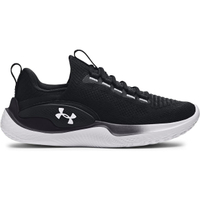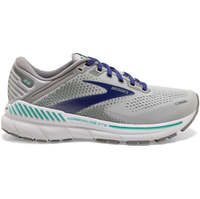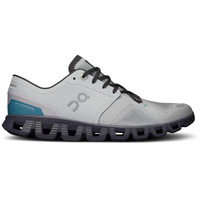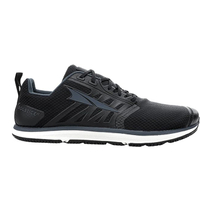9 best cross training shoes 2024: tried, tested and reviewed by fitness experts
The best cross training shoes for weightlifting, CrossFit, and Hyrox.
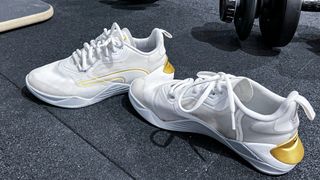
The best cross training shoes are ones that deliver comfort, versatility and durability. They should stand up to fast transitions between your workouts, whether you enjoy CrossFit-style workouts, Hyrox training, general weightlifting, or a little bit of everything.
If you have no idea where to start, we're here to help. Tom's Guide testers are qualified personal trainers and have years of experience testing the best cross training shoes from leading brands in the industry, including Nike Metcon, Reebok, R.A.D and Nobull, to bring you the best in class whatever your budget, ability, or workout style.
Our best pick is the latest Reebok launch, the Reebok Nano Gym shoe. The durable outsole, light and cushioned forefoot and heel, and solid foot-ground support made it a true winner in our books. Our favorite budget-friendly shoe is the Under Armour HOVR Rise 3, which offers flexibility, durability and cushioning without breaking the bank.
During many months of testing, and alongside contributing personal trainers, we mixed up workouts to include weightlifting, HIIT, running, and free weights, looking at the pros and cons of each shoe, how it was made, and why you should or shouldn't buy it.
We've also spoken to CrossFit instructors and athletes to find out how they choose the best cross training shoes for their sports to help inform our decisions about the top 9 workout shoes to include. Read on for our full round-up below, plus tips on how to buy, products that just missed out, and all your cross training shoe questions answered.
The quick list
Here are the best cross training shoes you can buy right now based on our testing. Scroll down for in-depth reviews.
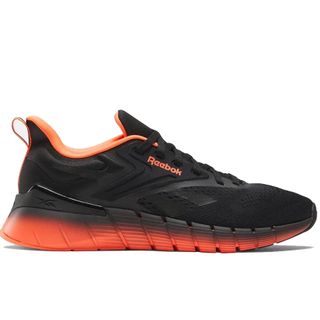
The newly released Reebok Nano Gym brings its A-game to cross training. There's plenty of pliability and bounce around the forefoot and heel with enough stability to lift weights and run.
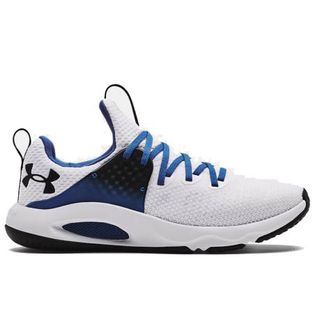
Those on a budget should consider the Under Armour HOVR Rise 3. The HOVR Rise 3 offers breathability, flexibility, durability and cushioning for a relatively affordable sneaker.
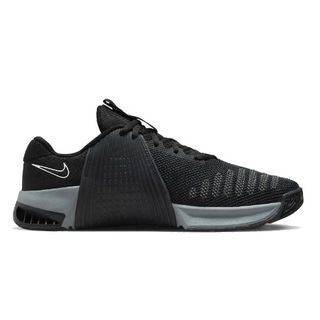
Our in-house personal trainer rates these as the best Nike Metcons overall. Expect a wider toe box, more pronounced rope guard, HyperLift plates and better cushioning than the 8.

A classic in the cross training shoe world, NOBULL+ provides a 4mm drop, neutral support and combines a wide outsole with a herringbone tread pattern for superb traction.
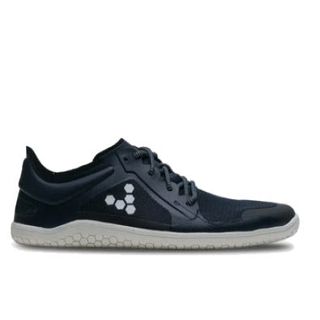
Want to train barefoot without actually stripping off your sneakers altogether? The Primus Lite is leading the barefoot-feel revolution without breaking the bank.
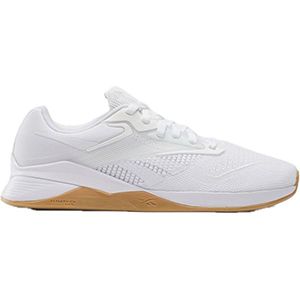
The Reebok Nano range is the gift that just keeps giving. If you like more stability for technical lifts, try the X4 rather than the Nano Gym, as you'll find a better foot-ground connection for barbell work.
Review panel

Sam Hopes is Tom's Guide's senior fitness writer and a qualified level 3 trainer. Sam regularly attends CrossFit and Hyrox classes and has many years of experience testing the best cross training shoes to wear during different types of workouts.
She has firsthand experience working with brands like Nike and Reebok, even visiting top facilities to test shoes before launch, including the launch of WIT X Puma Fuse 2.0 and Nike Metcon 9, and the Under Armour Academy.

Jennifer Rizzuto is a freelance writer and NASM personal trainer based in Long Island, NY. She covers various fitness-related topics and reviews for Tom's Guide and has tested some of the best cross training shoes on the market to contribute toward our guide.
The best cross training shoes we recommend in 2024
Why you can trust Tom's Guide
Best cross training shoe overall


1. Reebok Nano Gym shoe
Our expert review:
Specifications
Reasons to buy
Reasons to avoid
The Reebok Nano Gym shoe is a top choice if you're training for a Hyrox or like to switch between lifting and running easily. In fact, I recently switched from the Puma Fuse 2.0 to the Nano Gym shoe for my next Hyrox competition.
The Reebok Nano Gym is the latest Nano addition and brings one of the most dynamic and versatile cross training shoes yet. They look and feel like running shoes, yet Reebok builds the flexibility of a weight-training shoe into its very DNA.
A bootie construction provides a secure and comfortable fit and the TPU cradle offers lateral support for weightlifting. Designed for gym workouts and not just running, the lightweight mesh upper, EVA midsole and zoned rubber outsole provide traction, grip and plenty of superb bounce. The shoe offers an 8mm drop to provide a do-it-all approach to training.
The Nano Gym is designed with specialized upper silhouettes built to provide the best fit and most comfort possible. Having just officially launched to the public in July 2024, I'm obsessed with them already.
I've found them super grippy for sled pushes and pulls, outdoor dry runs and during other functional stations found in Hyrox-style or CrossFit workouts, and I haven't experienced much heel slippage at all, although they have definitely stretched in the time I've been wearing them (a lot).
Tester: Sam
Best budget cross training shoe


2. Under Armour HOVR Rise 3
Our expert review:
Specifications
Reasons to buy
Reasons to avoid
If there’s one place you don’t want to cut corners, it’s in shopping for training shoes (trust me, I’ve learned this the hard way). That being said, a good pair can cost you well over $150, sometimes inching closer to $200. If you want to add some variety to your exercise regimen but don’t want to break the bank doing it, the UA HOVR Rise 3 is your answer.
For a relatively affordable sneaker, I was quite surprised at the HOVR Rise 3’s quality — the upper mesh was breathable, pliable, and durable, while the outsole and internal “UA HOVR” cushioning were supportive without feeling uncomfortably hard. The Rise 3’s midsole felt much firmer than many shoes on our list, making them appropriate for a moderately heavy resistance circuit.
The HOVR Rise 3’s also aren’t a bad choice for HIIT and shorter runs, thanks to its aforementioned cushioning. It's unusual for me to find a stable and supportive shoe that’s not specifically designed to correct overpronation.
The HOVR Rise 3’s performed well during a few HIIT Tabata and a quick mile run, and I didn’t wake up the next morning with my usually inevitable foot and ankle pain. The one minor flaw I found lies in the HOVR Rise 3’s outsole — they have a pretty thick base, and I noticed my opposing foot hitting up against it frequently.
A trademarked “UA TriBase” design comes standard on the HOVR Rise 3, although in my research I couldn’t find exactly what that design entailed. According to Under Armor, it maximizes ground contact and provides foot flexibility during lifts. I could tell the difference between the HOVR Rise 3 and other cushioned shoes on our list, like the ON Cloud X’s — I felt a much stronger connection to the floor on barbell squats and deadlifts.
However, I still wouldn’t recommend lacing up the HOVR Rise 3s for your super heavy lifting days — there’s too much padding between your foot and the floor to maintain a stable base of support.
Tester: Jennifer
Best Nike Metcon cross training shoe
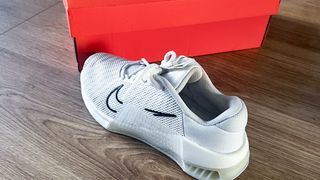

3. Nike Metcon 9
Our expert review:
Specifications
Reasons to buy
Reasons to avoid
I tested the Metcon 9 before its official release and rated the shoe far above the Metcon 8.
Both do stability and comfort well, but the ninth does it better. Expect a wider toe box and extended cross-stitch mesh upper that wraps around the shoe and provides superior flexibility.
There are other shoes I’d prefer to run in, but the latest gen of Nike Metcon deals competently with switching up high-intensity workouts with traditional weightlifting and technical lifts.
Upgrades include a raised groove at the medial toe box side of the upper (for better grip during rope climbs) and a more pronounced rope guard reminiscent of earlier designs. Nike also reduced the footprint to make way for the rope guard, although many Metcon lovers have slated the new look on social media, and I noticed a lack of grip at times.
Also, expect enlarged HyperLift plates that add a drop to the shoe and help mimic the raised heel found in many weightlifting shoes. There's dual-density midsole foam for better cushioning, and a much comfier sole with just enough bounce to help you out during burpees.
Not the comfiest cross training shoe out there, and many Crossfit instructors I've spoken to have opted for the R.A.D shoe (also on our list) over this one. Still, for Metcon purists, this model gets a big tick from us.
Tester: Sam
Best classic cross training shoe


4. NOBULL Trainer+
Our expert review:
Specifications
Reasons to buy
Reasons to avoid
The NOBULL Trainer+ features a wider and less tapered outsole, which is great in a few different ways. For one, you’ll get a little more surface area to work with and, in turn, a greater degree of stability and grip. This helps work with heavier loads, where you’ll need the solid base and decent grounding that the Trainer+ provides.
This wider outsole also means a not-so-dainty foot will get some additional wiggle room. While the Trainer+’s silhouette seemed slightly big for my comfort level, a male colleague who owns his pair reports that they fit him better than any other model of cross training shoe (and I definitely wouldn’t consider his foot dainty).
Another big plus for the Trainer+’s outsole is a deep herringbone tread pattern that transitions well for outdoor workouts. I laced them up for functional training in the backyard and was pleasantly surprised at how well I found my footing in the soil.
That deep herringbone tread creeps up along the inner midsole, which is great news for those who like a little masochism (rope climbs) with their exercise routines. And with a durable one-piece upper mesh construction, you won’t have to worry about any impacts from the elements.
There’s no doubt that the Trainer+ is a solid shoe, however “solid” often translates to “heavy,” and that’s, unfortunately, the case here. The thick outsole is stable but clunky — it felt like I was wearing a hiking boot when attempting a run or a HIIT workout. You won’t find too much arch support, despite a cushioned midsole. My insanely flat feet were screaming at me after about an hour with them on.
Tester: Jennifer
Best cross training shoe for barefoot


5. Vivobarefoot Primus Lite III
Our expert review:
Specifications
Reasons to buy
Reasons to avoid
Some powerlifters swear by Converse Chuck Taylors (or “chucks”) as their lifting footwear of choice, while others prefer to skip the shoes altogether. The Vivobarefoot Primus Lite III is a happy medium between the two, protecting your feet without blocking a proper connection to the floor — a necessity for effective (and safe) resistance training.
Slipping on the Primus Lite III felt kind of like slipping on a pair of old-school water shoes — the incredibly light, flexible rubber outsole and the thin mesh upper molded to my feet almost instantly. This combined with the Primus Lite III’s wide toe box and zero drop made me realize why the word “barefoot” is built into the brand name.
That “barefoot” feel is what makes the Primus Lite III so perfect for heavy lifting. The lack of abundant cushioning you’d find in most cross training shoes means you can drive every part of your foot — from the tips of your toes to your heels — into the ground.
High levels of stability and proprioception are crucial when pursuing maximal strength, and wearing the Primus Lite IIIs I could completely ground myself when attempting any high weight-low rep program.
Vivobarefoot often manufactures its footwear from sustainable and recycled materials, and the Primus Lite III is no exception. With Vivobarefoot’s “Revivo” program, you can return your worn-out shoes to be refurbished and resold (or recycled, if they’re dead). So you can work towards your next strength goal and help the planet at the same time. Win-win.
For a minimalist shoe, the Primus Lite IIIs are pretty pricey — one of the most expensive on our list. And while barefoot devotees will say that the Primus Lite IIIs can be worn for any activity, I wouldn’t lace them up for a run or any high-impact exercises (not before enrolling in Vivobarefoot’s “fundamentals” course, anyway).
Tester: Jennifer
6. Best cross training shoe for weightlifting

6. Reebok Nano X4 training shoe
Our expert review:
Specifications
Reasons to buy
Reasons to avoid
The Reebok Nano X4 cross training shoe made it into our line-up for being lightweight with brilliant support underfoot, and I appreciate that Reebok has stripped it back with the design. Unnecessary material has been removed from the upper and the technology has seen a facelift, making this shoe one of the most breathable yet.
The redesigned upper introduces FLEXWEAVE material and a midfoot ventilation panel for better breathability and versatility during performance. The focus is solely on lightweight breathability, which means anything that doesn't need to be there, isn't.
The Lift and Run (L.A.R) Chassis system provides midsole stability and cushioning so that you can move from deadlifts and squats to run with ease. I've tested these out during many CrossFit workouts, and find switching up activities effortless, although I would save them for weightlifting sessions for the most part as I wouldn't want to run longer distances in them like I would the Reebok Nano Gym.
If lifting is your thing, you'll appreciate the 7mm drop, and the shoe only weighs 12.10z. That said, the sizing comes up tight, so I recommend opting for at least a half size up, especially if you train with sports socks on like I do.
And if you plan to do a Hyrox or more than 1km of running in this shoe, this is absolutely not the one for you. The sturdy design might have Olympic lifters rejoicing, but for anyone running a distance, other models on the list have your back.
Tester: Sam
Best cross training shoe for stability and wide feet

7. Puma Fuse 2.0 x WIT Training shoes
Our expert review:
Specifications
Reasons to buy
Reasons to avoid
The Puma Fuse 2.0 x WIT Training shoe is worth a shout-out on this line-up. The Fuse 2.0 offers plenty of stability, a great fit and traction to provide even better performance. I've been training for Hyrox wearing the Puma Fuse 2.0 for a very good reason.
As put by Puma, these shoes are engineered for strength and a no-sew design that increases durability. The FUSEFLex metatarsal flex grooves improve foot splay for a solid connection between foot and floor during weight training. Alongside a TPU heel clip, the WIT collab version also houses a slick WIT logo and reflective form strip and eyestay.
During testing, I found the PROFOAM midsole cushioning offered a soft bounce and supportive feel without elevating my foot too far, which gave me a solid footing during strength training workouts.
The durable rubber outsole has proved worthy in all conditions from CrossFit classes to outdoor training and gym workouts, and the toe box offers plenty of room for my feet to breathe and for my toes to spread during lifts like deadlifts or squats.
The 4.0mm drop still allowed me to keep enough awareness between the floor and body to feel what my lower body was doing and the encompassing textile upper gave a secure fit. However, I experienced some slippage around the heels during rowing which I couldn't escape even with a tight pull on the laces. Although I could get through rope climbs, other models in this line-up can definitely do the job better.
I love that the Puma Fuse 2.0 balances comfort and foot-ground connection, but I would size down on this one, as they can feel quite loose.
Tester: Sam
Best cross training shoes for CrossFit
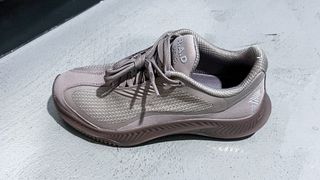
8. R.A.D One cross training shoe
Our expert review:
Specifications
Reasons to buy
Reasons to avoid
The R.A.D One cross training shoe supports CrossFit and all-around training. In fact, the model is making waves as the shoe of choice among the CrossFit communities by instructors and clients alike. Everyone I speak to is choosing these shoes.
The brand uses Swell Foam, which is a light and springy EVA midsole technology partly made from sugar cane, in an attempt to be more carbon-friendly, which gets a big tick.
So let's talk about fit. The shoes wear like the Under Armour Flow Dynamic training shoe in that it has ample cushioning and a lightweight feel, without the bootie fit of the UA Flow. It has also been stabilized for weightlifting, and upon slipping the R.A.D One on, you get a sense of true grounding.
You won't get as much toe splay as, say, the Metcon 9, but there's a definite sense of connectedness that allows for technical lifting. There's also ample cushioning in the forefoot, which suits plyometrics, and the rubber outsole gives the shoe a durable feel suitable for rope climbs and gymnastics. They feel quite thick to wear, but they're a favorite for a reason, and they're super comfortable for most activities. I wouldn't run in them for more than a few Ks though.
Tester: Sam
Best cross training shoe for court sports
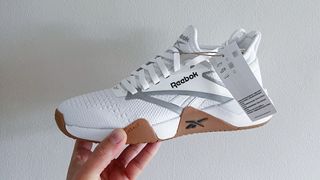
9. Reebok Nano Court shoe
Our expert review:
Specifications
Reasons to buy
Reasons to avoid
Launched as a court shoe specifically for Pickleball, tennis and Padel, the Nano Court is dubbed the "ultimate performance court shoe," focusing on stability, durability and grip.
Despite its court shoe credentials, this best-in-class addition to the Reebok Nano family can easily translate to cross training. I've worn the shoe across various CrossFit classes so far, and have barely any grumbles to speak of.
I love the built-in tongue which offers a booty-esque feel and secures the foot. However, I'd recommend ordering at least a half size up as the fit comes up tight. The Flexweave Pro upper is durable and robust and the ToeTection Guard offers protection from toe drags during workouts or on court.
Then you've got Griptonite rubber outsoles for multidirectional traction on the courts. Where the shoe suffers slightly is outdoors in wet weather, though it is positioned solely as a court shoe and Reebok hasn't designed it for the roads.
Where this shoe seriously excels is the bounceability factor. Floatride Court Foam offers the perfect amount of cushioning in the heel and forefoot, making this shoe perfect for explosive movement on or off court and during plyometrics. The design retains enough stability for lifts if you do choose it as a cross training shoe without the solid feeling you get underfoot with models like the Nike Metcon range.
If you want a spring in your step, this is the shoe for it. I practically bounced through my last set of burpees.
Tester: Sam
Also tested
We've tested many cross training shoes at Tom's Guide, but not all of them made it into the guide. If you're curious as to which ones missed out, consider checking out these below.
Under Armour Dynamic Flow (★★★★☆)
Sam tested the UA Dynamic Flow at the Under Armour Academy and they very narrowly missed out on a spot in the main guide. They're truly versatile, support plyometric and agility movements well and grip the floor like glue. They lack the support required for heavy weightlifting, but we love them all the same.
Ryka Devotion XT cross trainer (★★★★☆)
Jennifer tested the Ryka and loved the fit for women. She rated the width options, 8mm drop and neutral support, advising wearers to consider the shoe for dance, cardio, walking, HIIT and light resistance training.
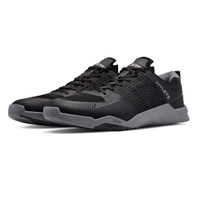
Hylete Circuit II cross training shoe (★★★★☆)
Jennifer also tested the Hylete Circuit II shoe and loved the versatility on offer. Drop options include 0,4 and 6mm, 3 insoles, a non-tapered toe box for a more natural foot position during weightlifting and Vibram outsoles for great traction and stability.
Brooks Adrenaline GTS 22 shoe (★★★☆☆)
Flat-footed lifters rejoice, the Brooks GTS 22 has you covered. There's a hefty 12mm drop, but you get motion control support and lots of cushioning if you tend to overpronate. However, the amount of cushioning made this shoe unsuitable for heavy weightlifting and you can only really do light resistance work in these.
ON Cloud X 3 cross training shoe (★★★☆☆)
Jennifer rated the ON Cloud shoes for their neutral support and 6mm drop, suitable for HIIT and light resistance training. Still, Helion Superfoam outsoles for shock absorption and a wealth of cushioning made them unsuitable for heavy weightlifting.
Altra Solstice XT 2 cross training shoe (★★★☆☆)
Jennifer also rated the zero drop and wide toe box of the Altra Solstice. She said: "The Solstice XT 2s proved incredibly comfortable when...completing a moderately heavy resistance training circuit. I was able to spread my toes out more than I was used to. I could better ground them to support heavier squats, presses, and deadlifts."
How to choose the best cross training shoes
First, consider your foot shape and size, and the type of exercise you plan to engage in. If you're unsure how you're going to be using your shoe, we've put together some tips for CrossFit beginners and Hyrox beginners who might be looking to start their cross training journey. But of course, these aren't the only types of cross training available, even though they're heavily trending up right now.
Cross training can simply mean you enjoy a range of sports and activities and just need a shoe that supports as much of that activity as possible. Maybe you enjoy HIIT classes at your local gym, or more specialist classes like Orange Theory and F45. If you think you might be switching between weights, running and functional movement, here are a few tips for choosing.
So, what to look for?
- Toebox: Look for enough space through the toe box that you can splay your feet and get a good sense of grounding underfoot. If you feel cramped, you might find it more difficult to complete technical lifts or move properly
- Cushioning: You'll need enough cushioning that you can run without compromising stability. That's why running shoes and walking shoes are a no-go. There's quite literally no one-size-fits-all approach, so find what works for you, but if you struggle to maintain balance, think about less cushion.
- Stability: This depends on how much technical weightlifting you think you might be doing. For more technical classes like Olympic lifting, consider greater stability and a rigid midsole and outsole to support you. A more flexible midsole and forefoot will support movements like box jumps and burpees better.
- Drop: Cross training shoes have a drop, which means an elevated heel, and stable outsole and midsole construction. You're looking at somewhere between barefoot shoes (no drop, think the Vivoactive Barefoot brand in our guide) and weightlifting shoes. Weightlifting shoes have a considerable drop to support anatomical positioning and lifting performance, but they're unsuitable for cross training.
If you enjoy activity that involves high-intensity training, running, and lifting weights, then we recommend selecting a cross training shoe with midsole and lateral support, light cushioning, paired with a higher heel-to-toe drop.
If you prefer Olympic lifting, you'll want to buy specific weightlifting shoes with a higher heel drop and rigid stability, helping to position your foot optimally for barbell lifts. The Nike Romaleos 4, NOBULL Lifters and Adidas Powerlift series are good places to start the search.
How we test the best cross training shoes
Each pair of cross training shoes has been worn for at least several months across a wide range of activities, including:
- Light, moderate, and heavy resistance training
- Olympic barbell lifting
- Walking and running
- Hyrox training
- HIIT
- CrossFit
- Outdoor boot camps
Each shoe was tested on a rubberized gym floor, concrete, and soil, in wet and dry weather. We've also worn the Nike Metcons during WIT HQ testing at the launch of the latest model, the 9, and the UA Flow Dynamic shoe went through aggressive fitness testing at the Under Armour Academy, London.
We take various pairs to CrossFit classes for everyday wear. All cross training shoes have been rigoriously evaluated for materials, sustainability, comfort, performance, versatility, durability, and other usability factors.
Q&A
What shoes are better for CrossFit?
Cross training shoes are designed with CrossFit workouts in mind, but some are better built for it. Workouts tap into functional training, meaning you'll pull, push, lift, jump, squat and climb, so your shoe will typically be designed to support these types of movement.
If you're a diehard Metcon wearer, the Nike Metcon 9 is the best-in-class Metcon shoe we've tested and retains the popular ropeguard. For all-round versatility, it has to be the Reebok Nano Gym, which is the latest Reebok release to hit the cross training community. We love how bouncy the shoe feels, but you can happily still lift heavy weights in the shoe.
What's the difference between cross training shoes and weightlifting shoes?
Cross training shoes are built for versatility, meaning they're typically built for agility and multidirectional movement. That said, you wouldn't wear them for long runs. Weightlifting shoes are tailored to Olympic lifting and, as suggested, lifting heavy weights.
Your shoe must be able to maximize energy transfer and proffer stability when you generate force. That's why cross training shoes suit anything from a rope climb to short runs, lifts and plyometrics. In short, you should be able to move from one activity to another without a problem.
Weightlifting shoes are constructed specifically for heavy lifting, with an elevated heel, wider toe box and very rigid outsoles for stability. Technical lifts adopt a very specific movement pattern, so you'll need a shoe with a reliable foot-ground connection. Weightlifting shoes maximize power output, efficiency and performance. Hence why some lifters go barefoot or choose a pair of Vans or classic Converse Hi Tops.
We cover the difference in much more detail in our cross training shoes vs weightlifting shoes guide.
Are cross training shoes worth it?
100%. Cross training shoes could save you hundreds of dollars if you enjoy a variety of sports and activities, as most models cross over seamlessly. However, if you enjoy walking or running, you'll want to invest in a pair of the best running shoes and walking shoes because they'll offer specific support for the activity, especially longer efforts, hikes, or trail running. If you have poor ankle stability, for example, you might choose a pair that supports your gait.
For shorter runs and walks, cross training shoes work well. For example, you can wear them during Murph CrossFit workouts, which include a 1km run on either side of the workout. We wouldn't recommend them for much further distances as the shoes are built for stability and grounding during weightlifting exercises, which means you get less cushioning.
Sign up to get the BEST of Tom's Guide direct to your inbox.
Here at Tom’s Guide our expert editors are committed to bringing you the best news, reviews and guides to help you stay informed and ahead of the curve!
Jennifer Rizzuto is a freelance writer and certified personal trainer based in Long Island, NY. She covers various fitness-related topics and reviews for Tom's Guide. She also writes sketch comedy and short films, and performs frequently as an actor, singer, and improviser. When she's not writing, working out, or performing, you'll find her trying to convince her husband to get a dog.
-
Valentina4536 Wearing barefoot shoes completely transformed my workouts. They allow my feet to move naturally, which improved my stability and form during lifts. Over time, I’ve felt my legs and feet grow stronger. I personally use Hykes Max. They’re minimalist, durable, and really comfortable. It’s like rediscovering how your feet are meant to function.Reply
What do you think about barefoot shoes for working out?
